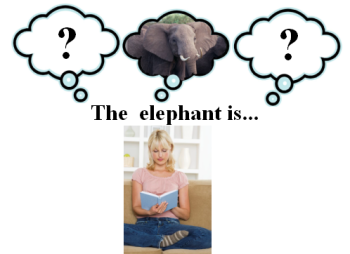Can the way you think really impair your ability to process words?
YES! There are two basic kinds of learners: Verbal and Nonverbal. Intelligence does not play a role in this distinction—it is simply a difference in learning and thinking styles.
|
Verbal learners mainly think in words rather than pictures, with a sort of internal dialogue. Verbal thought is linear and follows the structure of language. Thinking verbally consists of composing mental sentences, one word at a time, at about the same speed as speech.
Nonverbal learners mainly think in pictures. They think with 3-dimensional, multi-sensory images that evolve and grow as the thought process adds more information or concepts. They do not experience much, if any, internal dialogue. This thought process happens so much faster than verbal thinking, that it is usually subliminal. Individuals with Dyslexia are predominantly nonverbal/picture thinkers! |
The Dyslexia Dilemma...
|
Words that enable a picture-thinking person to imagine a picture, have meaning and are clearly understood. However, they are subconsciously challenged when faced with certain words like: the, was, if, and, were, in, on, as, or, that...and at least 207 others just like them (commonly known as “sight words”).
Those abstract words are at the root of reading difficulties for a picture-thinker. |
WHY? With no picture to process for each sight word, the reading material quickly loses meaning - causing confusion, frustration, and fatigue.
Consider, for a moment, that up to 60% of any given written paragraph are words that DO NOT trigger a visual picture. Imagine, as a person who thinks in pictures, trying to obtain the real meaning of a paragraph when 60% of the words are words with which they cannot think!
Consider, for a moment, that up to 60% of any given written paragraph are words that DO NOT trigger a visual picture. Imagine, as a person who thinks in pictures, trying to obtain the real meaning of a paragraph when 60% of the words are words with which they cannot think!
Professional services described as Davis®, including Davis Dyslexia Correction®, Davis Symbol Mastery®, Davis Orientation Counseling®, Davis® Attention Mastery, Davis® Math Mastery, and Davis® Reading Program for Young Learners may only be provided by persons who are trained and licensed as Davis Facilitators or Specialists by Davis Dyslexia Association International.
Davis®, Davis Autism Approach®, Davis® Stepping Stones, and Davis Concepts for Life® are trademarks of Ronald D. Davis. Professional services described as Davis Autism Approach® or Davis Concepts for Life® may only be provided by persons who are trained and licensed by the Ron Davis Autism Foundation.
Copyright 2022 - Marla Verdone, Just Imagine Solutions; Karen LoGiudice, Mind's Eye Marketing. All rights reserved.
Davis®, Davis Autism Approach®, Davis® Stepping Stones, and Davis Concepts for Life® are trademarks of Ronald D. Davis. Professional services described as Davis Autism Approach® or Davis Concepts for Life® may only be provided by persons who are trained and licensed by the Ron Davis Autism Foundation.
Copyright 2022 - Marla Verdone, Just Imagine Solutions; Karen LoGiudice, Mind's Eye Marketing. All rights reserved.


